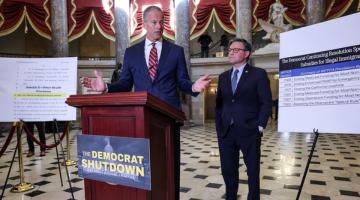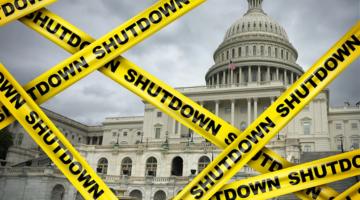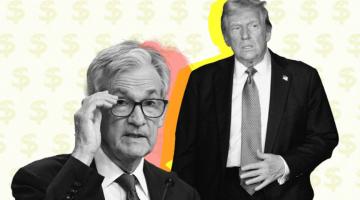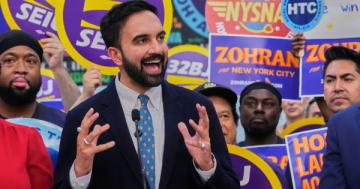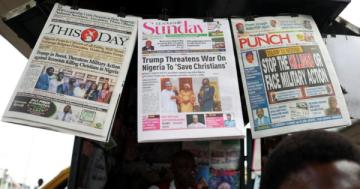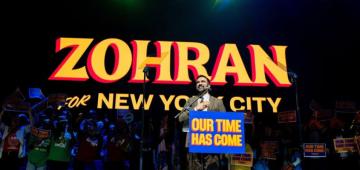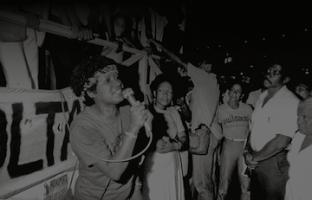Trump deploys Marines against LA protesters, echoing Nixon’s Kent State crackdown. But this time, he faces a broader, greatly disaffected opposition ready to fight back.
While there have mercifully been no fatalities, President Trump’s deployment of military personnel to corral Los Angeles protesters challenging his administration’s federal immigration policies invites comparisons to the May 4, 1970, clash between the Ohio National Guard and anti-war demonstrators that left four Kent State University students fatally wounded and nine others seriously injured.
Trump on Monday ordered 700 U.S. Marines to join 4,000 soldiers with California’s National Guard on the ground in Los Angeles to respond to protests against Immigration, Customs and Enforcement (ICE) arrests that turned violent over the weekend. But he did so over objections from California Governor Gavin Newsom and Los Angeles Mayor Karen Bass, both Democrats, who argued that the White House’s deployment of troops to the area was gratuitous and unnecessary to deal with violent outbursts that were minimal, isolated, and well within the state’s capacity to contain with local law-enforcement. In a post on Truth Social, Trump seemed to confirm that his decision to put boots on the ground was motivated, at least in part, by partisan politics.
“If Governor Gavin Newscum, of California, and Mayor Karen Bass, of Los Angeles, can’t do their jobs, which everyone knows they can’t, then the Federal Government will step in and solve the problem, RIOTS & LOOTERS, the way it should be solved!!!”
When the White House announced that it would send Marines into the fray, Newsom, who is widely considered a leading contender for his party’s 2028 nomination for president, wrote on the social media platform known as X:
“U.S. Marines have served honorably across multiple wars in defense of democracy. They are heroes. They shouldn't be deployed on American soil, facing their own countrymen to fulfill the deranged fantasy of a dictatorial President. This is un-American.”
But not really. In sending contingents of state and federal militias to Southern California, the White House is parroting President Richard Nixon’s deployment of the National Guard to Ohio to counter dissidents opposed to the Vietnam War, putatively to restore “law and order.” In explaining his position, Trump’s rhetoric is similar in both tone and language to that used by Nixon, who attributed demonstrations such as the one at Kent State to “outside agitators” and described protesters as “bums blowing up the campuses.”
Speaking to reporters Tuesday, Trump said:
“These are paid insurrectionists, these are paid troublemakers; they get money.”
Additionally, Trump and Nixon share another motive in responding aggressively to protests, which is to divide the electorate—largely along racial lines—by characterizing dissent as unpatriotic and appealing to white voters’ nationalist sensibilities.
In Nixon’s case, the tactic seemed to work. Possessed of remarkable pettiness and venality even by American political standards, the 37th president of the United States was a masterful political strategist whose genius, an aide once said, was “understanding who hates who.” His obsession during his five-and-a-half years in the Oval Office was his Southern Strategy, which was designed to smash a tenuous, interracial, New Deal consensus that by 1970 had governed the country for nearly 40 years. Aping efforts by his hero, Woodrow Wilson, Nixon sought to revive a laconic race war through a wide range of domestic policies intended to pit white workers against Black and leave the party’s out-of-touch, “effete” East Coast liberal leadership holding the bag.
While there is some evidence to suggest that Nixon ordered the National Guard to open fire at Kent State, few historians would dispute that Nixon viewed the incident as a shot across the bow, discouraging whites from participating in leftist movements in which there was a reasonable chance that their blood might be spilled in the streets just like African Americans who made trouble for the ruling class. Nixon understood that unspooling the Democrats’ already shaky rainbow coalition would usher in a new Republican majority.
A Gallup Poll taken days after the shootings suggests that Kent State did indeed have a chilling effect on public attitudes: 58 percent of respondents blamed the students for the violence, and only 11 percent held the National Guard culpable in stark contrast to surveys done before the incident which showed broad support for the anti-war movement, and growing student activism that often paired young whites with their radical counterparts in the Black Power movement. Said the political prisoner and Black Panther Mumia Abu Jamal of the era:
“Revolution seemed as inevitable as tomorrow’s newspaper.”
But if Nixon’s antagonism of liberals were part of a coherent strategy that took into account the governing political ethos of the day, Trump’s ham-handed gesture in Los Angeles would seem to shine an even brighter light on his administration’s incoherence, or its complete inability to read the room.
In his 133 days in office, Trump appears intent on alienating everyone he comes into contact with, including his base of white conservatives, with his “Big, Beautiful” budget proposal that, if passed, would cut deeply into the federal health insurance program for low-income Americans, Medicaid, and the government’s food assistance voucher subsidy, known as SNAP, that tens of millions of families rely on each month for groceries.
Additionally, the U.S. Labor Department last week said that the Trump administration has cut nearly 60,000 jobs since January—more than a third of that total in May alone—combining with a chaotic plan to increase tariffs on imported goods that is sparking widespread fears of a recession when second quarter Gross Domestic Product figures are released next month.
He has excoriated in public not only Democrats like Newsom and Bass but Republicans like U.S. Senator Rand Paul and his one-time ally, Elon Musk, who is also one of the party’s biggest donors, referring to the billionaire entrepreneur as a “big-time drug addict.”
His administration has fared no better abroad. Trump’s Defense Secretary Pete Hegseth has voiced support for Taiwan’s secession from mainland China, which China’s President Xi Jinping has warned is a red line that the U.S. should not attempt to cross. Simultaneously, China’s riposte to the Trump administration’s tariffs is to curb global shipments of rare earth minerals that are essential to the manufacture of cars, missiles and a range of electronic products, causing Ford Motor and other companies to suspend some of their operations.
In a social media post, Trump has described Russian President Vladimir Putin, with whom he has long boasted of having a close relationship, as “crazy.” Simultaneously, he has said that he expects Putin’s help in negotiating a new nuclear deal with Iran, which geopolitical analysts say is delusional given the close relationship between the two countries.
Concomitantly, while a majority of respondents say they approve of Trump’s aggressive deportations, his deployment of troops to Los Angeles seems to have emboldened activists as thousands of anti-ICE protesters have attended rallies in recent days across California, in Orange County, San Diego and San Francisco’s Bay Area; in other Western cities including Portland, Las Vegas, and Seattle; in Houston, San Antonio, Dallas, and Memphis; in Midwestern cities including Oklahoma City, Louisville, Chicago, Detroit, and Columbus, Ohio and along the East Coast in Charlotte, North Carolina, Atlanta, Washington D.C., and New York. In virtually all cities, the rallies have been attended by a diverse mixture of Latinos, African Americans, whites, Middle Eastern, and Asians, comparable to the throngs of demonstrators attending protests against Israel’s 17-month siege of Gaza.
Not only do Trump’s policies appear to be hardening opposition to his administration but there is evidence that they are also thinning out the ranks of his supporters. An Economist/YouGov poll conducted between May 30 and June 2 found that 49 percent of 1,610 adults polled described themselves as "MAGA Republicans," a drop from previous months and only a modest increase from 38 percent in September 2022. Among all U.S. adults, 16 percent now embrace the MAGA label, an increase of five percentage points from 11 percent two years ago, but down from a peak of 20 percent in March.
Unlike Nixon, Trump may have misread the tea leaves. Nixon exploited racism to pit white workers against their Black coworkers in an effort to dismantle the liberal consensus that governed the U.S. during the country’s Golden Industrial Age. But Trump’s America is different than Nixon’s; it is less white, less prosperous and less patriotic after 18 months of Israel’s televised genocide in Gaza that has galvanized wide swaths of the population. It remains an open question whether Americans will watch clashes between protesters and troops in Los Angeles and side with the demonstrators or the soldiers as their grandparents did in Kent State’s aftermath.
Jon Jeter is a former foreign correspondent for the Washington Post. He is the author of Flat Broke in the Free Market: How Globalization Fleeced Working People and the co-author of A Day Late and a Dollar Short: Dark Days and Bright Nights in Obama's Postracial America. His work can be found on Patreon as well as Black Republic Media.




